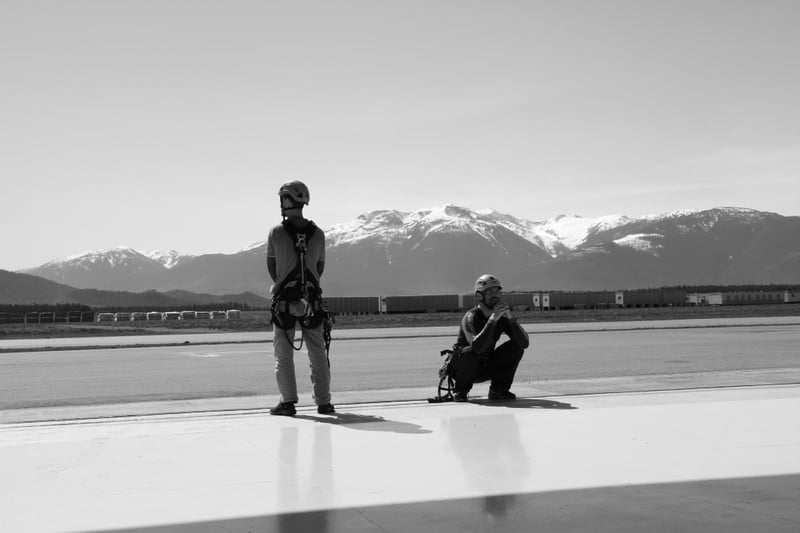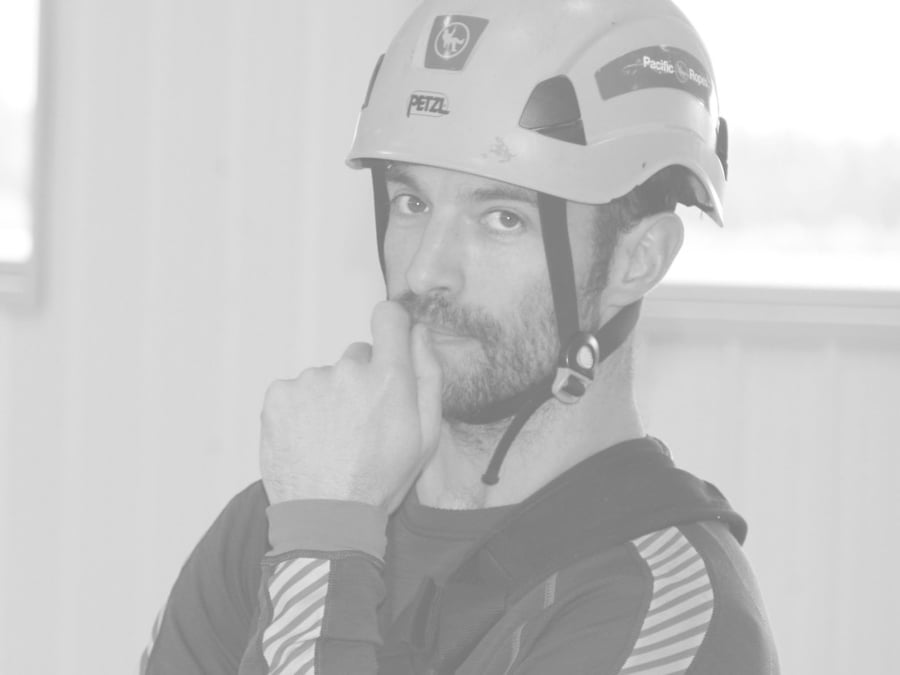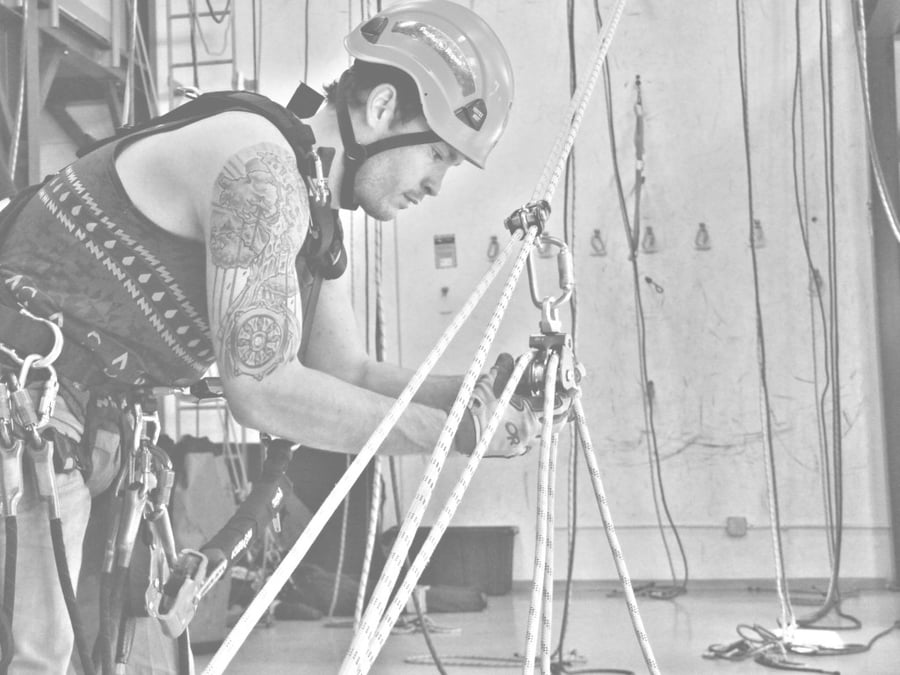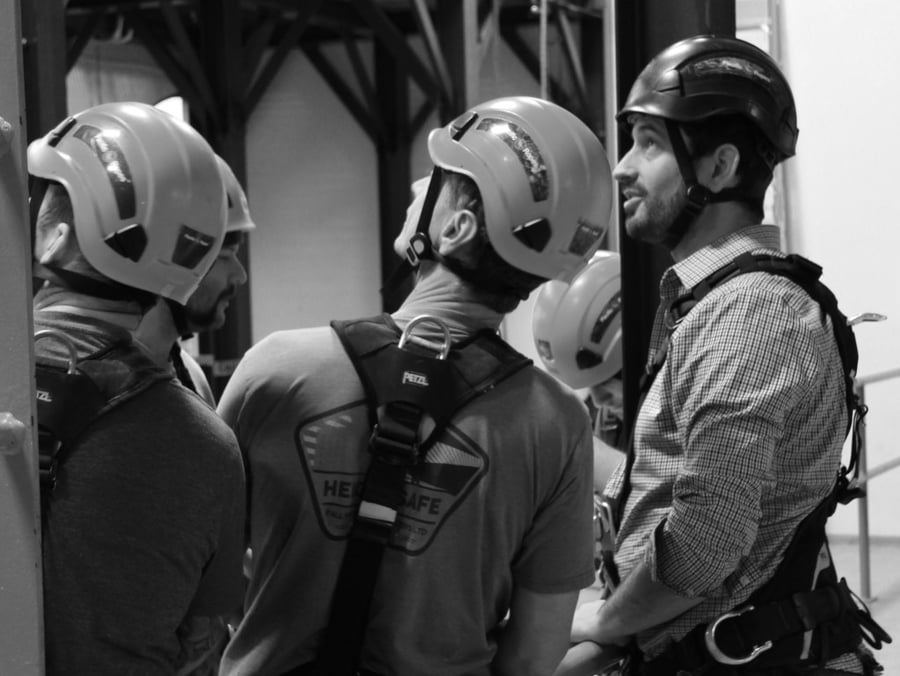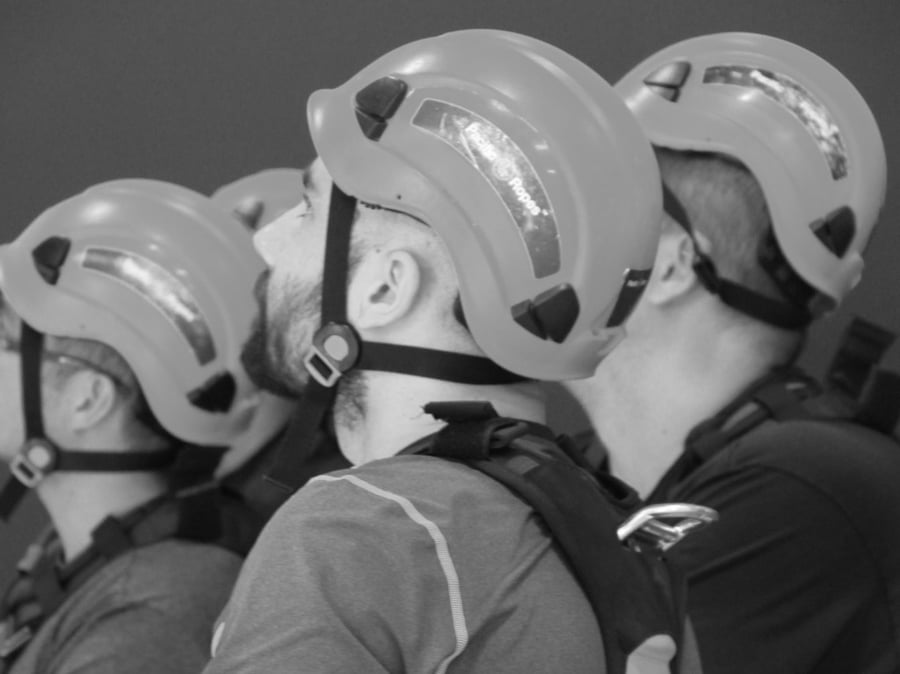What's the True Cost of Rope Access Training?
In Rope Access we rarely talk about our training and educational system as a cost or commodity.
There is an approximate Industry standardization of cost for training in Rope Access globally (depending on which association you are certifying within) but unless directly asked, we rarely discuss where our Industry has derived our training cost from. So, what is the actual breakdown of Cost = Value in a Rope Access course when you decide to invest in training? Great question. And, we are happy to set the record straight!
In a tech article I had the pleasure of coming across (Click), I began thinking about Rope Access as an irreplaceable human technology.
In the 21st Century, we have seen so many human skills, intuitions, and vocations replaced by inanimate technologies (ultimately devaluing human competencies in the marketplace and rendering them useless).
So, the article put human skill into an interesting equation: If a technological system can replace a human driven system with something less emotive, more cost efficient and time economical, humans can and will be replaced through the following 2 factors:
1) Automation: If whatever you do professionally can be done by a machine or nuanced technology, you are likely to be out of a job. YOU ARE OFFICIALLY REPLACEABLE and dollars have been saved because you're fundamentally replaceable.
2) Obsolescence: If the skills you possess, in principle, are useful, but an alternate technology or method of production/service takes over, your skill set is rendered obsolete or of decreased or no value.
My approach to contextualizing the value of Rope Access training plays directly on this equation and I actually think it’s some good food for thought:
Rope Access training, which is ultimately human driven (all the way from our Institutional make-up to the role of our Assessors), cannot be replaced by something purely technological/inanimate and our ultimate value is defined through total humanism. In fact, arguably in the global context of Rope Access, our training component stays cost consistent because nothing else can replace what we teach or how we teach Rope Access. The Cost = Value system of Rope Access training is matter-of-factly completely and unquestionably human driven.
So, how do we place a cost = value approach to Rope Access Training?
Our first Cost = Value component is:
1) Our people and more specifically our instructors/trainers:
Instructors in Rope Access are NOT designated as such by completing an online course, receiving post-secondary recognition, sitting in any kind of ivory tower, or through nepotism (“It’s who you know not what you know”). Every Rope Access instructor began their career with an entry level position in Rope Access after completing their Level One Certification and thereafter their Level 2 and Level 3 certifications over a number of years. They have been site supervisors, project planners, managed teams and worked in a wide diversity of locations, industrial environments, and within a multitude of work scopes with diverse project ends. They have a great deal of experiential knowledge beyond the controlled system of acquiring Rope Access certification and have amassed an abundance of skill/experience by working out in the world of true Rope Access (if you work in this industry you know what that really means).
When an instructor is ready to train others (and they typically decide this independently), they apply to an IRATA/SPRAT training committee with their written credentials, references, and are awarded their instructor status based on their documented skill and level of commitment to Rope Access demonstrated over a series of years in the field. (SIDE NOTE: This is actually why there is a massive shortage of bona fide Instructors in Canada. It isn’t easy and it certainly doesn’t happen overnight).
Point being, when you invest in Rope Access training you are investing in an educator who is fully vetted by our associations to prepare every student for any Rope Access work environment- every technique and maneuver, work scope environment, at any level of Rope Access certification.
In our Industry, there is true value in the vetting and experience of our Instructors.
2) It isn’t just an instructor that’s of great value when you invest in Rope Access, however. A Rope Access training facility is a heavily vetted and audited space, which implies that you can’t receive Rope Access training just anywhere from just anyone. Particularly (and in conjunction with IRATA and to a certain extent SPRAT legislation) several spatial, administrative, and technical constituents have to be met in order to operate as a designated training academy. We are subject to stringent entrance qualifications in order to ensure that we meet our associations’ requirement for quality assurance, safety, training space and working practice. Why? To ensure that we reflect and consistently reproduce technicians who represent the Rope Access culture of safety that has incredibly low levels of accidents and incidents for any work at-height. This takes time to achieve and is a heavily detailed and rigorous process. Becoming a training facility is NO joke and it is why there are a handful of training academies in Canada.
In our Industry, we derive a high value from completing the process of becoming a designated training institute and we make sure our students benefit from that status.
3) Rope Access training facilities are required to teach Rope Access according to very specific curriculum and syllabi that are created and governed by our IRATA/SPRAT associations. We have specific maneuvers, rescue techniques, movement/rope techniques, gear/equipment systems, and theoretical curriculum that are taught and tested exclusively within our training facilities. In terms of value, what this boils down to is that you invest in learning on our in-house gear (industrial ropes, rigging systems, spatial characteristics, harnesses, ascenders, descenders, back-up devices, industrial carabiners etc.) that have been audited and procedurally recorded by the training institution to ensure a student’s total safety and aptitude within the Rope Access system.
I like to think about it like this: Rope Access isn’t like learning how to knit, drive a boat, be Fall Protection proof, or ride a motor bike. Rope Access training is about learning how to work in a movement and equipment system that is designed to enter some of the most dangerous spaces in the world, with specifically Industry designed equipment, in the safest way that exists on rope and at-height.
Our Industry places a high value on teaching our curriculum within a system of theoretical and practical knowledge in a space that upholds our legislated educational expectations.
4) You invest in 4 X 8 hour days of physical and practical training and a 5th day of testing.
Training days are intensive and we assign a high value on the innovative learning experience each student has during these days. Technically, each student should confidently go into their written and field (practical) examination with a total knowingness of their level of certification being tested.
Our Industry places a high value on this controlled and highly regulated learning experience.
5) Which brings us to arguably the greatest Cost = Value component you invest in when you enter Rope Access: Our Assessors/Evaluators.
Assessors represent the true rigor of Rope Access and are entrusted to uphold our strict culture of safety. They are (as fantastical as this sounds) our true gatekeepers. They determine each student’s rite of passage into their desired level of certification and ultimately keep our Industry’s technical levels of skill consistent in accordance with our associations’ legislated expectations.
Much like our Instructors and training facilities, they didn’t earn this title overnight. They have acted as Level 3 technicians for a minimum of 6 years, have extensive experience as an Instructor, they are recommended by 2 existing Assessors (IRATA specifically is particular about this), have their preparedness deliberated amongst a training committee, are tested by 2 third party assessors, and finally go against a review panel that ultimately awards their designation as an Assessor/Evaluator.
As hired by a training facility, Assessors/Evaluators HAVE to be contracted per training group as a third party component- they can have NO association to the training facility or contracting end. Why? Our Industry legislates total impartiality when it comes to testing a student’s readiness for the Rope Access Industry and the level of certification they are hoping to uphold and represent within their teams.
This means NO ONE is given special treatment or passes an examination because they are “friends” with the Assessor, are really likeable, have travelled across the world for training, or any other kind of equivalent that would suggest special treatment (our legislation also clearly states that bribery is consequential). Rope Access Technicians and our Industry takes our third party component very seriously and the integrity of our industry depends on it. (Side note: In Canada, again, we have a dire shortage of Assessors, so they are often flown in from Eastern Canada, the United States, and in some cases the UK. Assessors charge a premium for their level of expertise and services and this is something training facilities do not put into question).
Our Industry assigns a very high value to our testing system and the third party Assessors/Evaluators who uphold the safety and competency expectations of our Industry.
6) Like any other course, degree/diploma or certification you decide to invest in, the cost of any resource you use in the educational facility is included. At most training facilities this includes USB’s that hold your IRATA/SPRAT curriculum, ICOP, TACS and homework; your total gear system; and never to be forgotten, the administrative staff who ensures you receive all your paperwork and certification correctly before and after training. Believe me when I say, this list goes on.
For anyone who has given their blood, sweat and tears to this Industry, the value of a Rope Access course truly pays for itself once you understand the intricacies of what and most importantly WHO has taken the time to facilitate our total educational system. Any student of Rope Access should be taught and tested by the BEST of the best in Rope Access, and the best is worth your safety, time, and ultimately, your life and the life of your team members.
Can you put a cost on getting home safely after a day of working on rope? We didn’t think so.
To discover more about what you'll learn in a Rope Access course, come to our ONE DAY Rope Access Awareness course! Details here!
From all of us at Pacific Ropes (we’re worth the investment),
Stay Safe and we’ll see you on the ropes!
